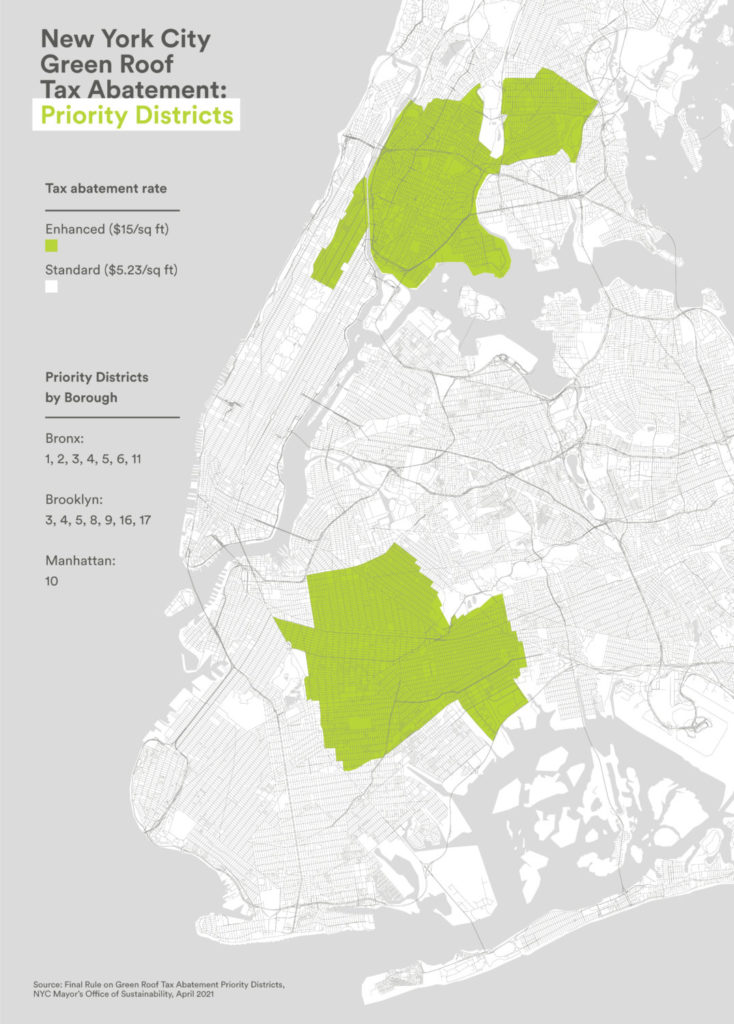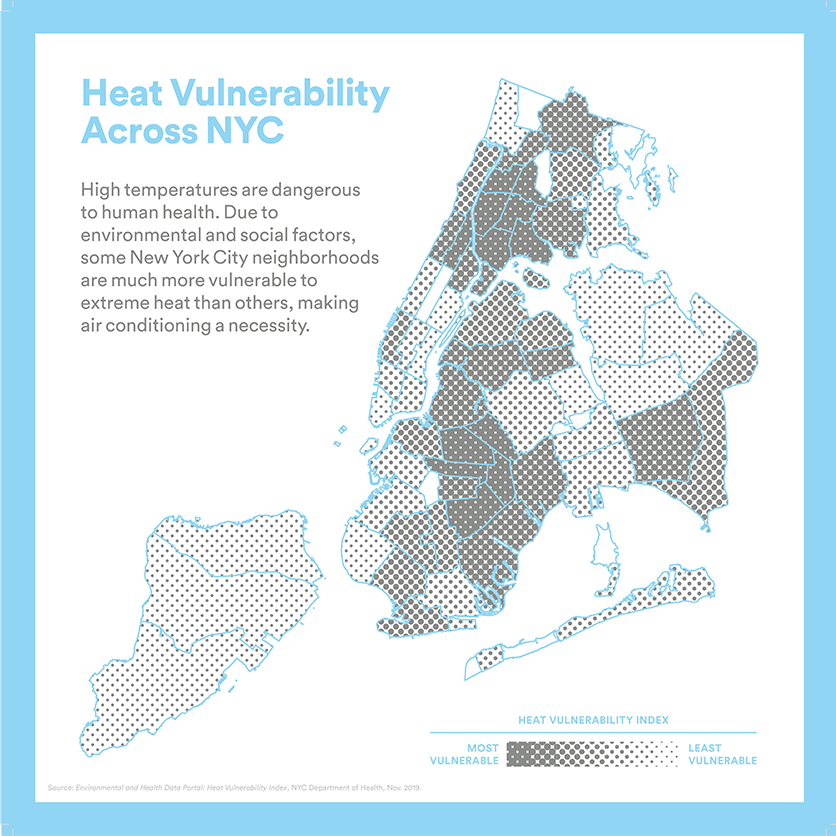For more information about the benefits of green roofs and recently enhanced tax incentives for green roof installation in NYC priority districts, see our May 25, 2021 event, “Climate Mobilization Act Series: Green Roofs as Equity Infrastructure.”
by Inger Staggs Yancey, AIA, LEED AP, GRP, Brooklyn Greenroof, LLC
Addressing many of our urban health hazards, New York City is encouraging the installation of green roofs by dramatically increasing tax incentives that prioritize vulnerable neighborhoods. Green roofs are a critical tool to improve the health and environment of cities, increase the longevity and asset value of our buildings, reduce operating costs, while reclaiming the ‘lost space’ of our roofs, providing functionality, beauty, and habitat.
A ‘green roof’ is a building rooftop that is partially or completely covered with live, drought-resistant or equally hardy vegetation. This planted, living surface provides many operational, health, and environmental benefits, including:
- Operational Benefits
- Insulation: The additional ‘green’ layer provides increased roof insulation, reducing heat loss (and gain) throughout the year, which reduces heating and cooling utility expenses.
- Longevity: Green roofs protect the underlying roof membrane from damage, extending the life of the covered roof layer by two to three times. The plants themselves, if properly maintained, can last indefinitely.
- Health Benefits
- Urban Heating: Urban infrastructure (streets, sidewalks, etc.) tends to reflect sunlight, radiating heat into the surrounding neighborhood, whereas green roofs act to absorb sunlight and heat, cooling the surrounding environment and combating harmful over-heating, also know as the ‘heat island effect.’
- Air Quality: Adding green roofs into urban areas can provide significant new swaths of vegetation, improving the surrounding air quality.
- Environmental Benefits
- Stormwater management: Vegetated roofs soak up and evaporate rainwater that would otherwise contribute to runoff, flooding and water pollution during heavy precipitation events.
- Carbon emissions: Green roofs lower heating and cooling demands can significantly lower building energy demand, reducing the related harmful carbon emissions; additionally, plants reduce carbon emissions directly, absorbing CO2 through photosynthesis, as they give off oxygen.
Under the Climate Mobilization Act, Local Law 92 and Local Law 94 of 2019 require all new buildings and most major roof renovations to install green roofs, solar panels, or a combination of the two across most of the roof area, defined as a “sustainable roofing zone.” NYC’s Mayor’s Office of Long Term Planning and Sustainability (aka Mayor’s Office of Sustainability) has established rules that designate certain city Community Districts as Priority Zones for the Green Roof Tax Abatement program. Green roofs installed in these areas will be eligible for a $15 per square foot property tax abatement – nearly triple the base abatement. Elsewhere, the level of the incentive in the city will remain at $5.23 per square foot. With the launch of the PACE program, green roof retrofits in all areas may be eligible for additional financing opportunities. MOS’s announcement specifies the new Priority Districts and tax abatement rates. A preliminary map showing where the zones are located is seen below.

The incentive’s Priority Zones were selected to help community districts particularly vulnerable to high levels of heat stress, as well as other environmental concerns. The New York City Department of Health and Mental Hygiene (DOHMH) has amassed data that links health issues (like higher asthma rates, mortality from heart attacks and strokes, and hospital visits caused by poor air quality) to neighborhoods throughout the city. The DOHMH established a Heat Vulnerability Index that defines heat-related mortality based on neighborhood characteristics such as access to green space, poverty, daytime summer surface temperature, and households reporting air conditioning. The New York City Department of Environmental Protection (DEP) has prioritized green infrastructure development in Combined Sewer Overflow (CSO) Tributary Areas (aka “CSO Priority Areas”), where sewage overflow systems increase risk of water pollution and poor water quality. With this information, we can target the areas where reducing heat stress and improved access to clean air and clean water is most crucial to the wellbeing of our city’s most vulnerable neighborhoods. Both of these issues have been clearly shown to be improved through the implementation of green roofs.

The biggest hurdles to implementing this newly available environmental justice tool are public awareness of the program, and knowledge of the benefits of green roofs to property value, community health, and environmental sustainability. This incentive will go a long way in helping to spread the word. It will supply a substantial portion of the installation cost to building owners in neighborhoods where the benefits will have a big impact.
Inger Staggs Yancey is a LEED Accredited Architect and a Green Roof Professional (GRP) who has more than 30 years of experience creating sustainable architecture. Inger is the founder and President of Brooklyn Greenroof LLC, providing green roofing services in a design/build capacity to those interested in reducing their energy bills, swiftly decreasing their carbon footprint and adding an element of natural beauty to their daily life.